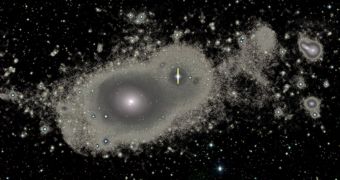According to the results of a new international study, it would appear that elliptical galaxies may in fact be a lot younger than current formation models imply. The conclusion was drawn after an in-depth study of two such galaxies, which displayed some unusual features.
The team of astronomers that conducted the work is part of the Atlas3D collaboration, an effort by investigators in several countries to understand the global stellar kinematics and dynamics of galaxies.
The project covers 260 early-type galaxies around the Milky Way, which were selected as a relevant sample. Multi-wavelength surveys of these structures are then combined with numerical simulations and semi-analytic modeling of galaxy formation.
Ultimately, the goal is to understand how these structures evolved in the early Universe, and also how they interacted amongst themselves. Experts also want to understand the properties of the medium in which these events took place.
Scientists from the French National Center for Scientific Research (CNRS), le Commissariat à l’énergie atomique et aux énergies alternatives (CEA), the Canada-France-Hawaii Telescope (CFHT) and the Observatoire de Lyon are a part of the work.
Their latest results challenge the standard model for elliptical galaxies formation. The two cosmic structures they analyzed look as if they are about five times younger than first calculated. Age is usually calculated based on stellar populations.
For these particular objects, experts estimated an age of between 7 and 10 billion years. But the CFHT MegaCam camera instrument shows that the galaxies NGC 680 and NGC 5557 may have formed from spiral galaxy mergers, just 1 to 3 billion years ago.
One of the most important findings that led experts to this conclusion is the fact that the camera managed to discovery ultra faint gas filaments at the outskirts of the galaxies. Generally, these structures are produced by mergers, and only last a few billion years.
The new findings are very important, because they put galaxy formation in a new light. When the Milky Way collides with Andromeda, it's possible that the two will also produce an elliptical galaxy that will look much older than it actually is.

 14 DAY TRIAL //
14 DAY TRIAL //